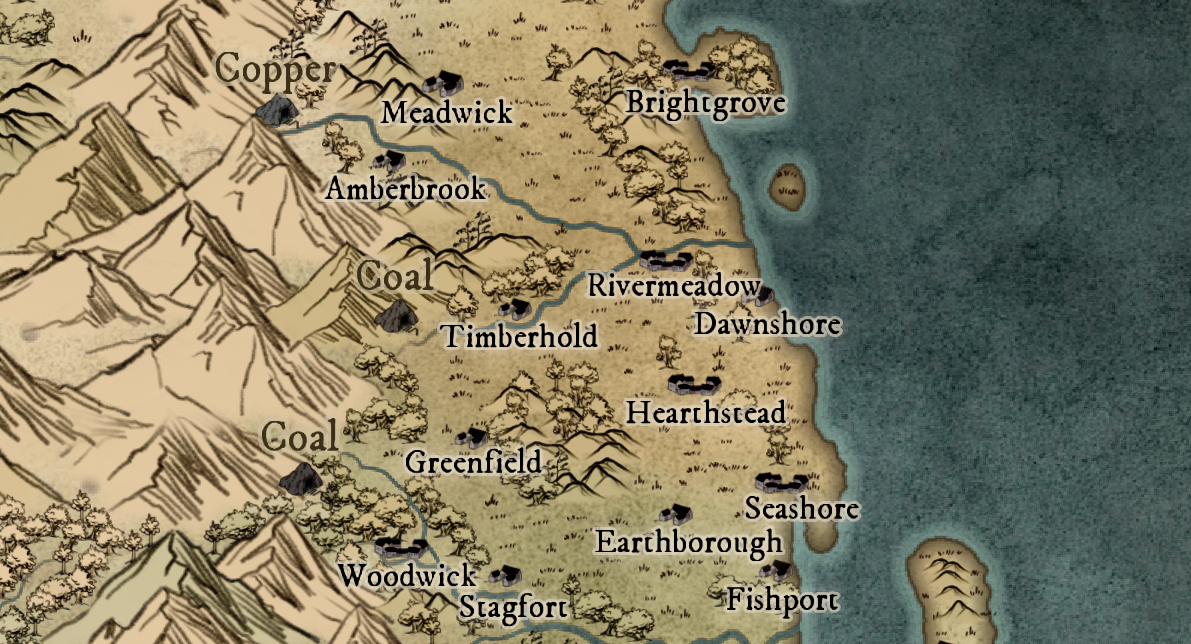
A Time of Expansion and Growth
Cultural event
In the centuries following the establishment of Rivermeadow, the human community entered a period of steady expansion and growth. The once small settlement, nestled by the junction of two bountiful rivers, quickly became the heart of a burgeoning civilization.
As the population grew, so too did the size and complexity of the settlement. Huts gave way to houses, crude structures were replaced by more permanent buildings, and farmlands were carefully cultivated to yield an abundance of food. With the added benefit of a strategic location for resource extraction and transportation, Rivermeadow thrived and paved the way for the construction of other settlements along the rivers and coast. The availability of copper and coal from nearby mountains allowed for the development of essential tools and infrastructure, enabling the early settlers to further their reach. While Rivermeadow remained the center of human society, other settlements began to sprout along the rivers and coast, establishing their own unique identities and contributing to the overall growth of the community. Settlements such as Hearthstead, nestled in the heart of the fertile plains, focused on agriculture. They developed new crop varieties, cultivated vast fields, and bred a variety of animals that became integral to the survival and prosperity of the people. Timberhold, situated near the expansive forest, became renowned for its master carpenters and woodworkers, crafting everything from tools to boats to beautiful pieces of furniture. Upstream, near the copper deposits, was Amberbrook, where skilled workers extracted and processed the raw materials that drove the early economy. Each of these settlements was independent, yet closely connected, trading goods, ideas, and technologies in a network of mutual support and cooperation. As settlements grew and developed, so too did the networks of trails and paths that connected them, facilitating travel and trade. Initially, transport relied heavily on the rivers and the sea, but as the populace expanded further into the interior of the continent, land routes became more important. The use of simple sleds and rafts gradually gave way to more complex and efficient transport methods such as wagons and carriages, even before horses were fully domesticated. In this time of steady expansion, community cooperation was key. Each settlement took care of its own but also contributed to the greater society. Communities worked together to maintain roads, share resources, and assist each other during times of hardship. It was a time of harmony and collective growth, with each community proud of its own identity but also recognising its place within the broader civilization. The humans, despite their initial hardships and the memory of the deadly Black Decay, were becoming a thriving, resilient civilization. This period of history, while still far from the establishment of a unified kingdom, saw the foundations of human society being laid. The independent, interconnected settlements set the stage for the future, where cooperation and shared ambition would continue to propel the growth of human civilization. Previous event
